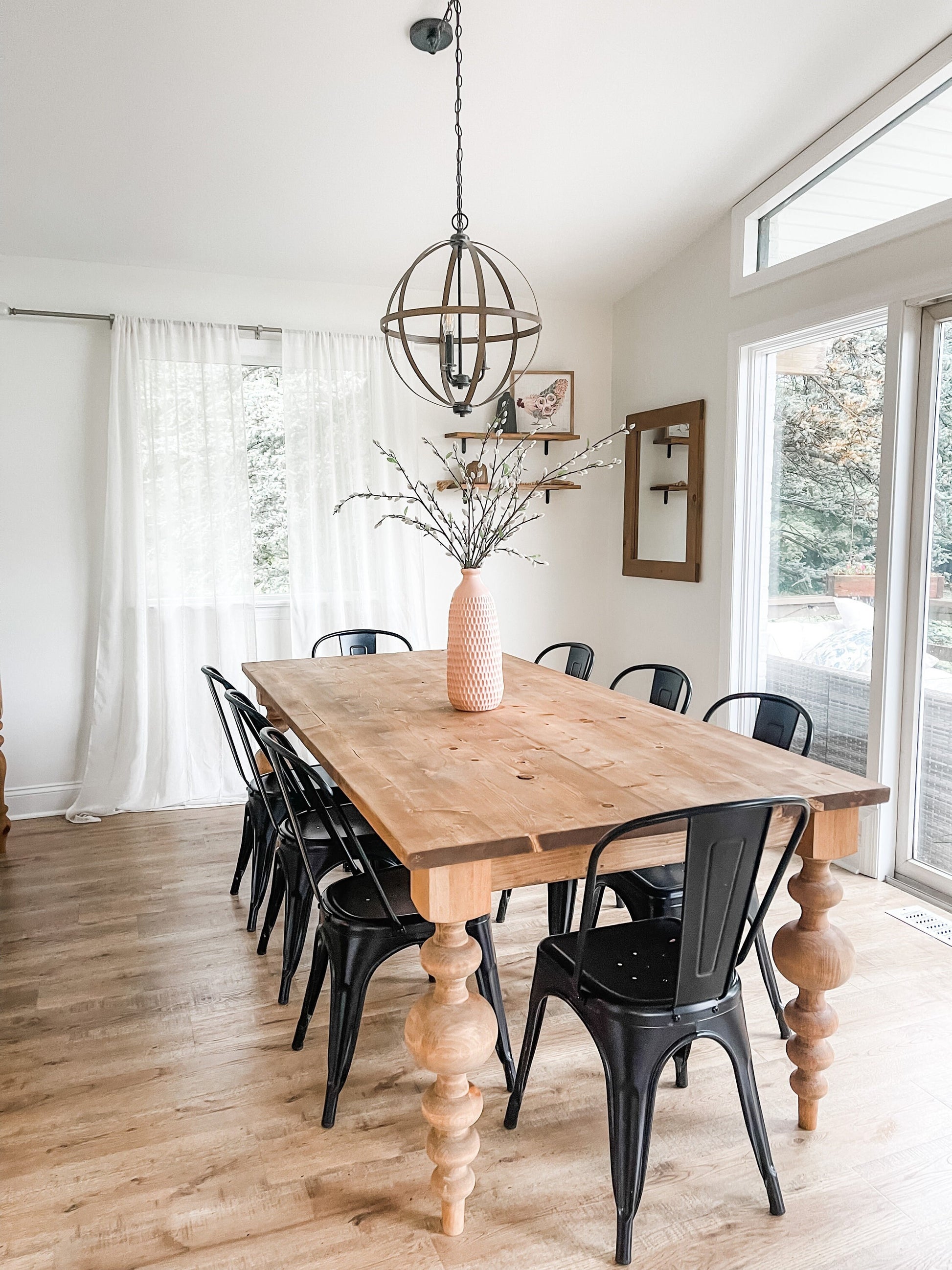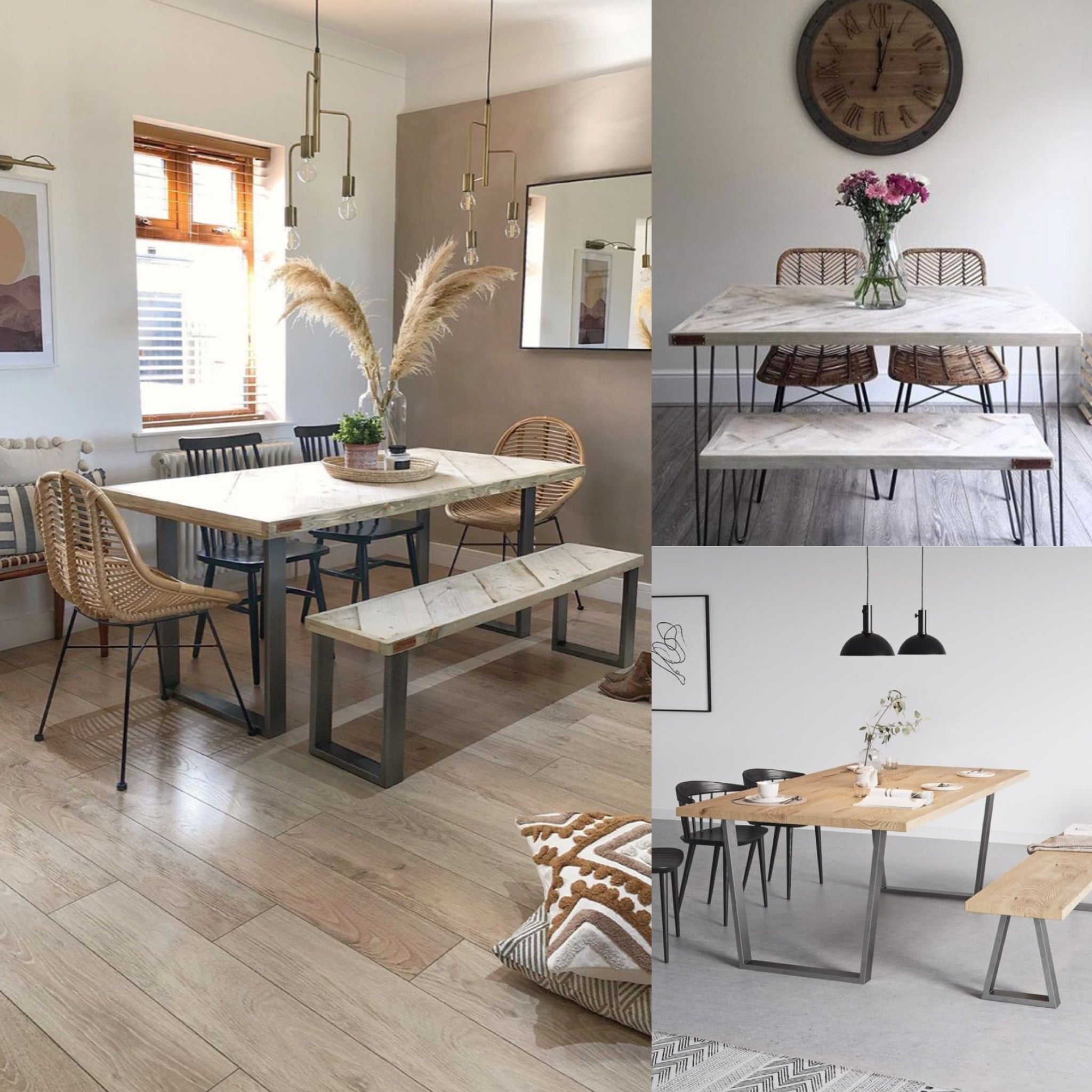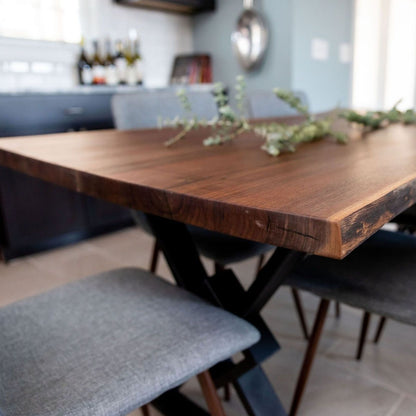The Impact of Dining Room Table Legs on Your Table's Overall Design
The Impact of Dining Room Table Legs on Your Table's Overall Design
Blog Article
Specialist Tips for Putting Up Eating Space Table Legs for Optimum Security
When it comes to mounting dining room table legs, achieving optimum stability is critical for both performance and aesthetics. The process starts with picking the best products and equipment, complied with by meticulous positioning and factor to consider of weight distribution. Each step plays a vital role in making sure that the finished item stands up to day-to-day use without endangering safety and security or design integrity. Comprehending the subtleties of these components can considerably affect the overall end result. What particular techniques can enhance stability even better?
Choose the Right Legs
When choosing the suitable legs for your dining-room table, it is necessary to take into consideration both functionality and visual appeals. The legs you choose will significantly influence the general style and security of the table. Initially, review the table's meant usage; if you expect frequent events, stronger legs, such as those made from strong wood or metal, may be better, as they provide boosted toughness and assistance.
Conventional eating tables usually range from 28 to 30 inches in elevation, so guarantee the legs line up with this requirement for comfort. Conical legs can add a contemporary touch, while turned legs might communicate an extra classic visual.

Select Appropriate Hardware
Exactly how can the appropriate equipment boost the stability and durability of your dining-room table? The option of appropriate hardware is essential to guaranteeing that the legs of your table are firmly affixed and able to hold up against normal use. High-quality screws, screws, and braces offer the required stamina to sustain the weight of the table, as well as any type of additional tons placed upon it throughout meals or celebrations.
When choosing screws, choose those made from durable products such as stainless steel or brass, which withstand corrosion and keep honesty gradually. The length of the screws is equally important; they should permeate deeply right into the table's framework without endangering stability. For bolted links, consider using lock washing machines to stop loosening up as a result of resonance or motion.
Furthermore, using edge brackets can add extra support, particularly for bigger tables or those with larger tops. These braces distribute weight equally and aid preserve the table's shape. Making certain that the equipment you pick is proper for the certain materials of your table will further improve its total security and durability, permitting you to appreciate your eating experience for years to find.
Ensure Proper Positioning
Proper positioning of dining-room table legs is essential for both aesthetic charm and functional security. Misaligned legs can result in an unequal table top, which may not just be aesthetically uninviting however also compromise the table's use. To accomplish ideal alignment, begin by measuring the range from the table's edges to the leg add-on factors. This guarantees that each leg is positioned equidistant from the sides, producing a well balanced appearance.
Use a level throughout installment to confirm that each leg is vertical to the table top. It is a good idea to note the preferred leg placements on the underside of the table with a pencil or masking tape prior to safeguarding them.
In addition, ascertain the alignment after the first screws are tightened up, as modifications might be required prior to completely safeguarding the hardware. By focusing on proper positioning, you not just enhance the table's total layout but additionally make sure that it continues to be useful and secure for years to find.

Think About Weight Distribution
After ensuring proper positioning of the eating area table legs, it is essential to consider weight circulation to boost security and functionality. dining room table legs. Correct weight circulation is vital in avoiding tottering and guaranteeing that the table can sustain its original site designated lots without threat of tipping or collapsing
When placing the legs, ensure they are placed at equivalent distances from the facility of the table to equally disperse the weight throughout the structure. Take into consideration the weight of the tabletop and any type of products that will regularly hinge on it, such as tabletop appliances or ornamental items. Tables with heavier surfaces ought to ideally have legs located closer to the corners, as this optimizes the base of support and lessens the risk of instability.
Furthermore, if the table is planned for use in a high-traffic area, consider making use of much heavier products for the legs or adding supporting aspects, such as cross-bracing or a lower rack - dining room table legs. These modifications can assist preserve balance and prevent changing throughout usage. Ultimately, a well-considered weight circulation strategy will dramatically improve the table's general efficiency, ensuring it continues basics to be a functional and appealing centerpiece for your eating space
Examination Security Before Use
Examining the security of the dining area table before use is an important step that should not be forgotten. Making sure that the table is steady and secure can stop mishaps and lengthen the life expectancy of the furnishings. Begin by applying gentle stress to various points on the table surface. Lower on the center and afterwards along the edges, observing any wobbling or shifting. If the table shows instability, determine the legs or joints that may need adjustment.
Following, inspect that all screws and bolts are tightened correctly. Loosened links can cause instability and possible damages in time. If required, make use of wood glue on joints to improve stability, making sure to permit sufficient drying time.

Verdict
Finally, the installation of eating space table legs needs cautious factor to consider of materials, hardware, weight, and placement circulation to see this page achieve optimum stability. By picking strong legs and high-grade fasteners, making sure exact positioning, and distributing weight equally, the structural honesty of the table can be dramatically boosted. Performing a stability test before regular usage better makes sure that the table will certainly endure day-to-day stress, consequently offering a risk-free and trustworthy dining experience.
When it comes to setting up dining area table legs, attaining maximum stability is paramount for both performance and appearances. The legs you pick will substantially impact the general design and security of the table (dining room table legs). Typical dining tables usually range from 28 to 30 inches in height, so ensure the legs line up with this requirement for convenience.Proper placement of dining room table legs is important for both aesthetic charm and functional security.In verdict, the setup of eating area table legs needs careful factor to consider of products, equipment, positioning, and weight circulation to achieve optimum security
Report this page